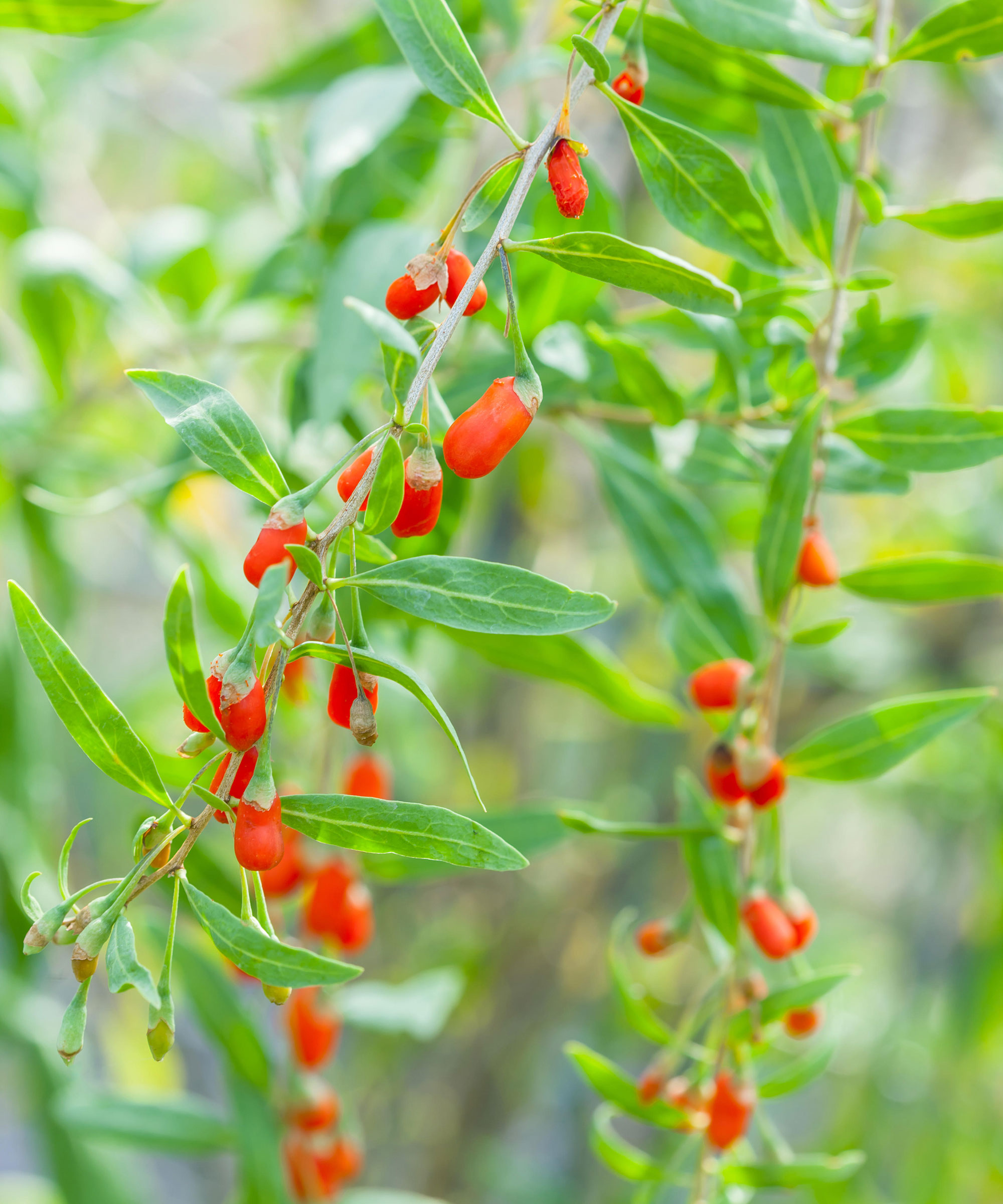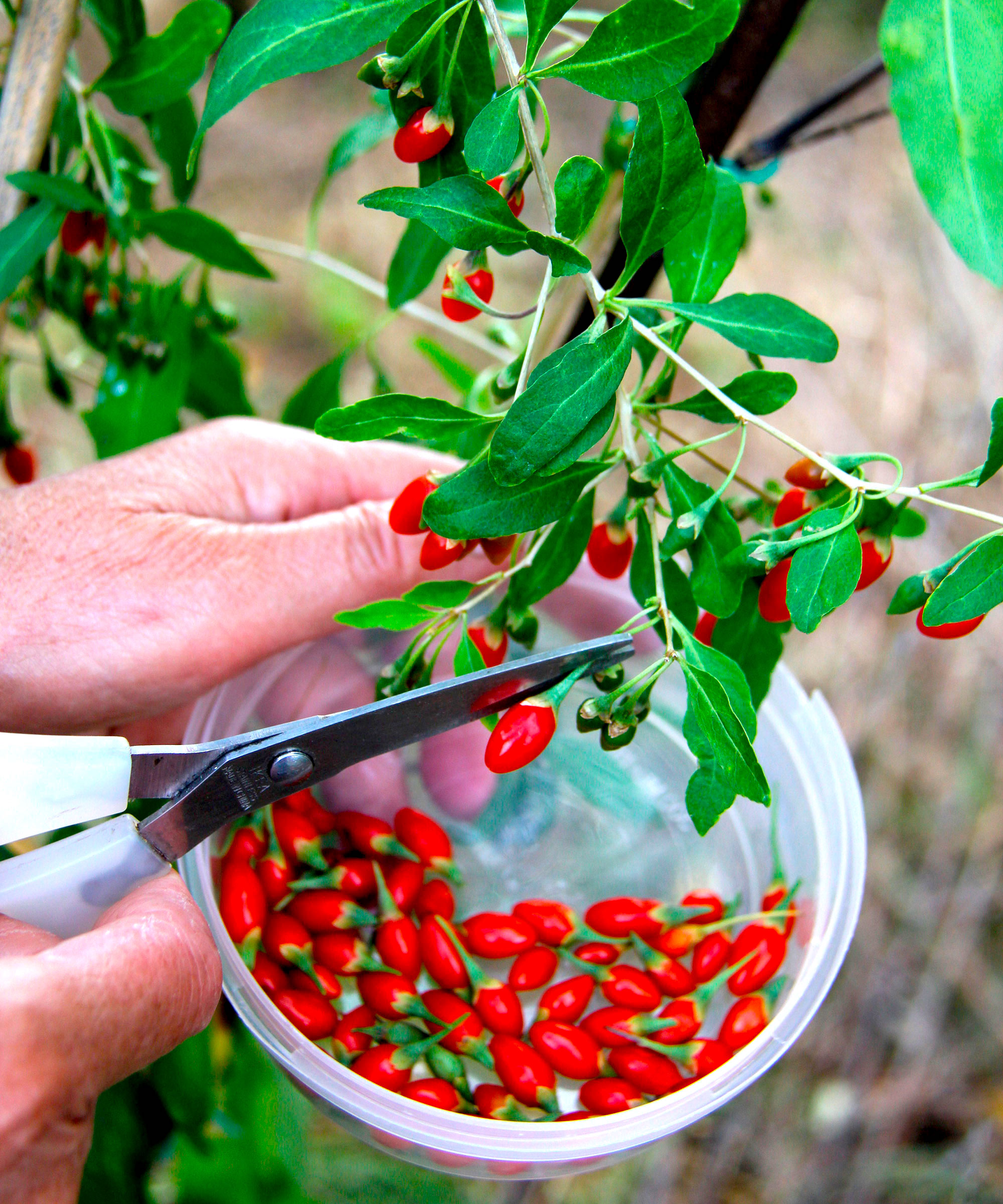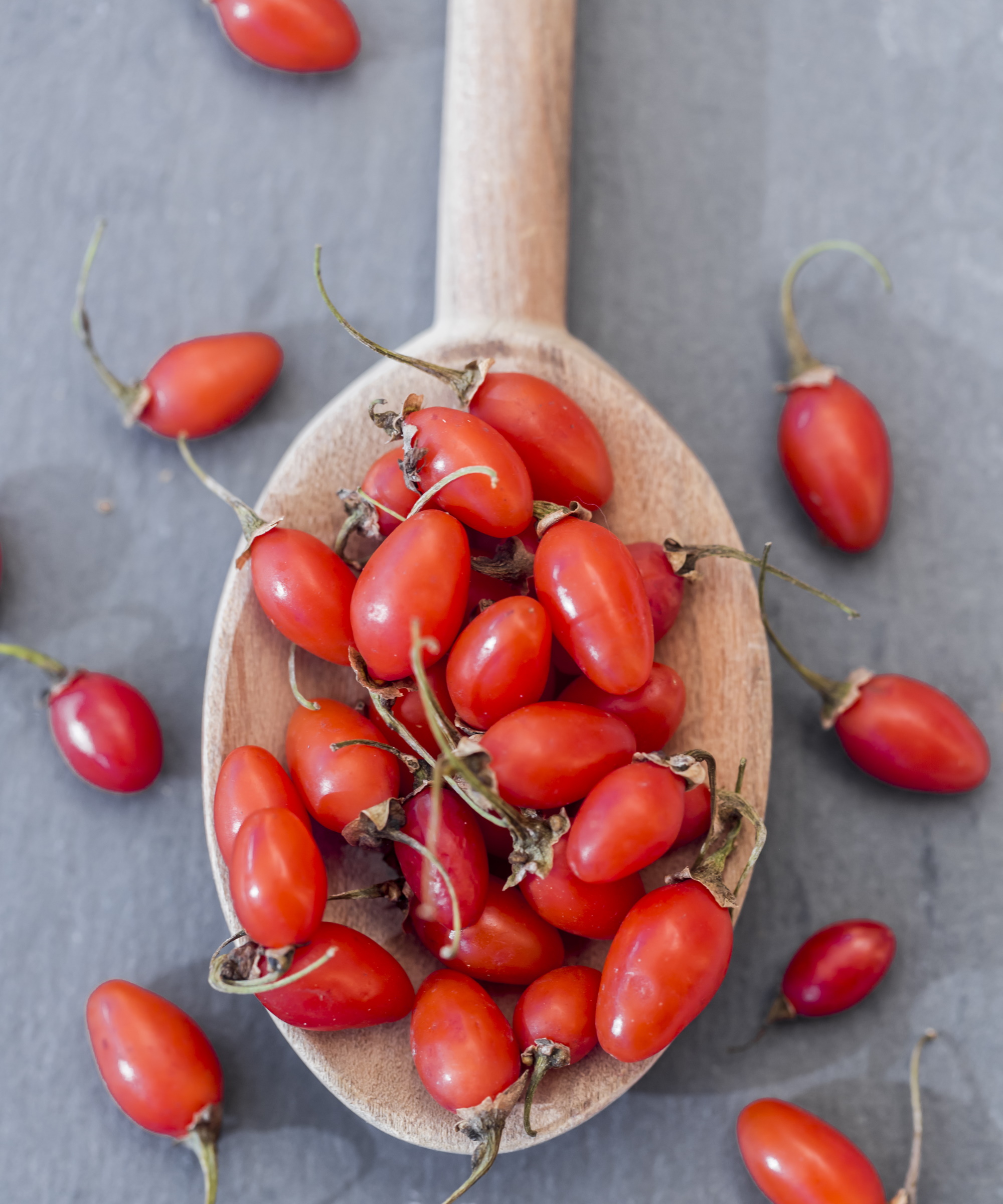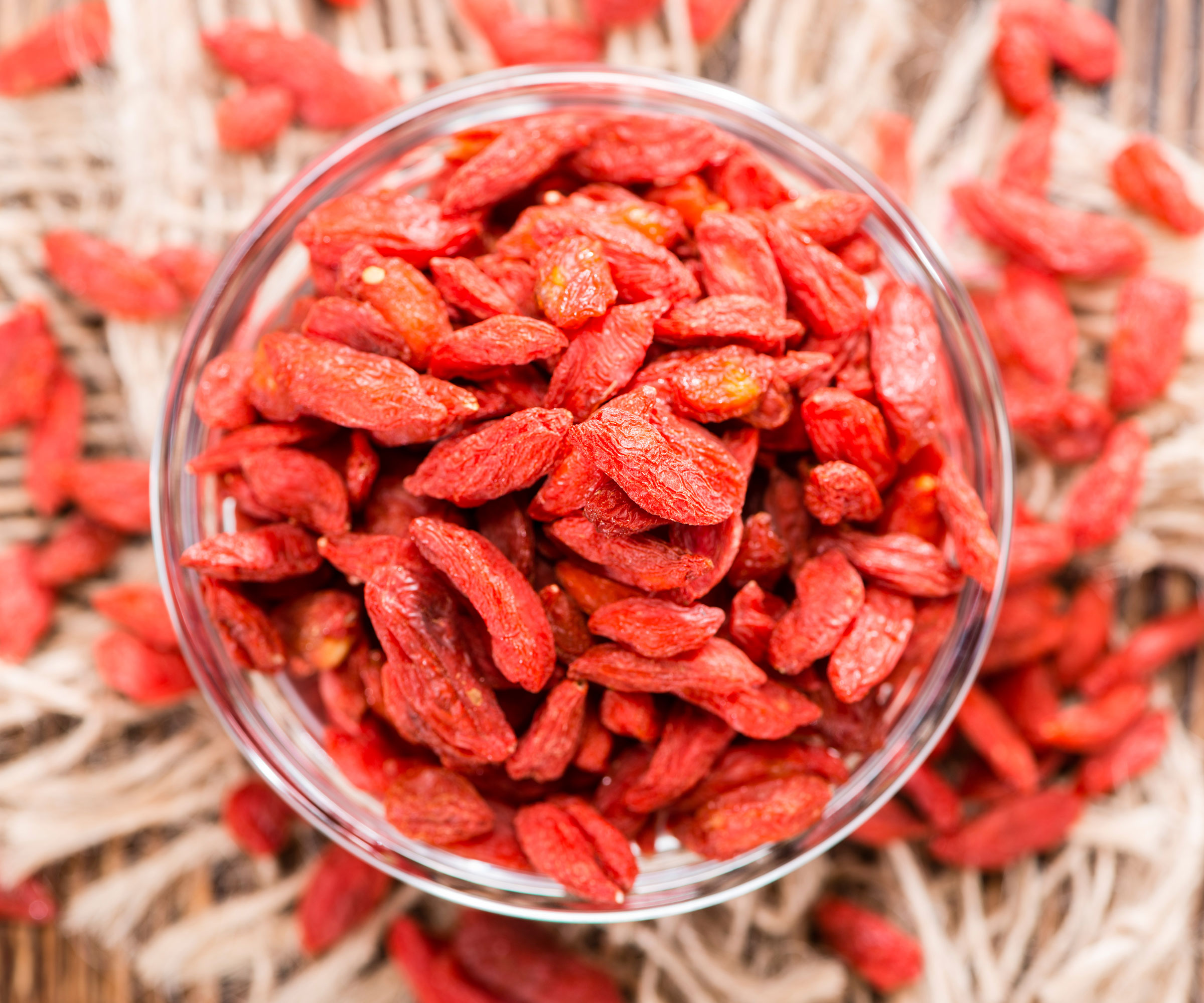When to harvest goji berries – and why the professionals wait before picking these fruits
Patience is a virtue when it comes to harvesting these nutrient-packed berries

Rachel Bull

If you have put precious time and effort into learning how to grow goji berries this year, you’ll be understandably eager to enjoy your goji fruits as quickly as possible. Gojis (Lycium barbarum), also known as wolfberries, have become a hugely popular superfood in the US, based on their nutrient-rich and antioxidant properties. Not only are they delicious eaten fresh or dried, they are also said to boost immunity and can act as anti-inflammatory.
So, it's no wonder you want to pick them as soon as possible. However, exercising a little restraint and patience is advised by the gardening experts, who say it's important to understand when to harvest goji berries to ensure a decent and sweet crop.
Expert advice on when and how to harvest goji berries
Unlike some of the best fast-growing fruit trees, you’ll have to wait a few years for generous harvests.

How long to leave a goji shrub before harvesting
In the first couple of years, goji shrubs focus on developing strong root systems and healthy foliage. As Ward Dilmore, landscape designer and co-founder of Petrus, points out, goji berries are amongst the best landscaping shrubs you can grow.
‘Their attractive willow-like foliage adds a striking aesthetic value,’ says Ward. Their sprawling habit can be easily allowed to roam free or trained along fences or a trellis. As well as being vibrant edibles, they bring a lot to the plot in terms of visual interest, depending on how you grow them.
‘Their slender branches and green leaves make them suitable for both formal and informal garden designs,’ continues Ward. 'By maintaining good goji health, you are contributing to the overall health of the garden. Gojis can attract bees, and birds are known to enjoy their berries,' he adds.
There are exceptions to this rule, of course. If you are growing goji berries from cuttings, you may spy flowering (and possibly a fruit set) in the first year.
Design expertise in your inbox – from inspiring decorating ideas and beautiful celebrity homes to practical gardening advice and shopping round-ups.
However, as a general rule, it takes about three years for established trees to stockpile the resources needed to produce masses of fruits over an extended period. If this is your year, fruits will form from late summer to early fall.
You can purchase bare root goji berry shrubs from Food Forest Nursery.

Ward Dilmore is a landscape designer and founder of Petrus Landscape in the Bay Area of San Francisco. With an unconventional blend of horticulture expertise and international relations background, Ward brings innovation and sustainable creativity to his designs. His commitment to merging beauty with eco-conscious practices marks him as a dynamic artist in the industry, carving a path of bold, fresh perspectives in the world of landscaping.

When to harvest goji berries
Once you are confident those vivid red berries have had time to sweeten up on the shrubs, shake the branches to see if any drop off – or pluck a few for a taste test.
According to our experts, goji berries are ready for harvest when they turn bright red and are plump and juicy. Try to pick them gently, as they are delicate. If you don’t want to eat them fresh in cereal or blended as smoothies, lay them flat on some paper.
They dry fairly quickly, making them ideal for snacks or as an ingredient in baking. Harvesting can last until the first frosts, but don’t extend the season beyond that point as it affects the flavor of the fruit. With care, you can grow goji berries from the same shrub for decades.

How to prune gojis for a bigger berry harvest next year
If you fancy growing goji berries that flourish year after year, some judicious pruning works wonders for shaping and fruiting. To avoid the main pruning mistakes, pick the right time.
It is advisable to carry out the main cuts in winter while the plant is dormant. Don’t leap in too soon, though. Derek Carter, owner of Food Forest Nursery, suggests avoiding pruning in the first year.
‘In the second winter, pick a main trunk and prune everything above 12-18in from the ground,’ he says. ‘Remove crossing or long smooth branches that don't produce as much. Then, in summer, tip (or pinch) the ends of growth to trigger better fruiting.’
You may find that after two or three years, new shoots sprout from the ground around the main shrub. These shoots, known as suckers, should be removed to preserve the shape of the parent plant. However, if you dig them up with their roots attached you can move them somewhere else in the garden to make new plants.

Derek discovered permaculture in his early twenties while working as a mechanical engineer. Thanks to its combination of design and sustainable food production, he became hooked. He received his Permaculture Design Certificate from Oregon State University, quit his job in Houston and started a homestead in Arkansas. He developed Food Forest Nursery from scratch, shipping out a few dozen orders, and now deals with thousands of customers annually. Next year, he plans to found a non-profit with the goal of installing food forests at every school in the US.

FAQs
Why are my goji berries not making fruit?
While goji berries are high yielding once established, it does take them a few years to reach their full potential if planted as young shrubs. Indeed, there is a strong chance they won’t fruit for the first few years. Try to manage your expectations and don’t be despondent if you don’t see much activity straightaway.
If you do want to ensure early fruiting, try growing goji berries from cuttings taken from established plants. However, if you spot a powdery coating on the leaves of your plant, there’s a possibility it may be diseased. Powdery mildew can stunt fruit production, and if you spot its telltale talcum-style coating, you need to act fast. Homemade sprays, including diluted baking soda, neem oil or vinegar, could combat its spread if applied to the leaves.
Fall is often the prime time to harvest berries, and there are so many varieties to choose from, including blackberries, raspberries and loganberries. Many of these are some of the best brambles you can grow in your yard.

A former assistant editor of Amateur Gardening magazine, Janey's gardening passion was fostered from an early age, when her amazing mum had her deadheading hydrangeas, mulching roses, and propagating strawberry plants from runners for school open days. She's also taken part in lots of conservation and rewilding projects for the RHS and TCV as a way of exploring her horticultural horizons.
- Rachel BullHead of Gardens